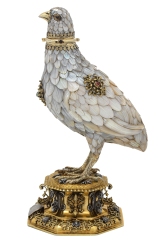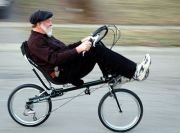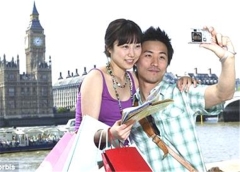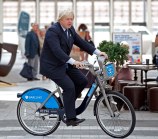Tags
best value London Pass, Charles Dickens museum, free transport in London with the London Pass, how much can you save with the London Pass, how much does the London Pass cost, is the London Pass for everyone, is the London Pass good value for money, London attractions, London sightseeing, London tourist, London Zoo, problems with the London Pass, pros and cons of the London Pass, see London, sightseeing in London, The London Pass, tourist attractions, Tower of London, what attractions are exclued with the London Pass, what is the London Pass, what sights can I see with the London Pass, where to get the London Pass, www.goodwheelrentabike.co.uk
What is The London Pass?
The London Pass is a ‘smart’ card with a chip inside which allows the user to scan their card and gain entry to a choice of 50+ popular tourist attractions in London.
Cards are available for 1, 2, 3 or 6 days’ duration. When you first use the card to gain admission to an attraction it becomes activated.
The adult Pass covers admission to attractions worth £90 per day. E.g. if you buy a 2-day adult Pass for £64 you can visit £180 worth of attractions which means that you are in effect paying only about a third of what you would pay if you didn’t have the Pass. (The childrens’ Pass covers admission to attractions worth £50 per day which is equivalent to £90 worth of admissions for an adult).
Do I need to know my exact date of travel?
No. The Pass remains valid for 12 months after the estimated start date you provided at the time of booking. So even if your plans for a summer trip don’t work out you can still use it for the following winter trip, so long as one year hasn’t elapsed from the original travel date.
What else can I use the Pass for?
If you choose to pay an additional £9 per day per adult (about £3.50 extra for childrens’ Passes) you can get a Pass that includes a London Travelcard which provides unlimited travel during off-peak hours on Transport for London buses, the underground, on trams, DLR and overground trains within zones 1 – 6 i.e. within all of Greater London (including taking the underground to or from Heathrow airport). Off-peak hours begins at 9.30 AM each working day Monday – Friday and all of weekends.
BUT you can’t use the Travel option on these services: any express airport trains, such us the Heathrow Express or Heathrow Connect, Gatwick Express, Stansted Express, or National Express trains.
What does it Cost?
See table below for costs without the inclusive travel option. As you will see A £47 one-day adult pass entitles the user to £90 (almost double) worth of sightseeing at London sites. The savings get larger the longer the period.
|
Days |
Cost |
Pass Value (adult) |
Pass Value (child <15 yrs) |
|
1 Day Adult Pass |
£47.00 |
£90 |
|
|
1 Day Child Pass |
£30.00 |
£50 |
|
|
2 Day Adult Pass |
£64.00 |
£180 |
|
|
2 Day Child Pass |
£47.00 |
£100 |
|
|
3 Day Adult Pass |
£77.00 |
£270 |
|
|
3 Day Child Pass |
£53.00 |
£150 |
|
|
6 Day Adult Pass |
£102.00 |
£540 |
|
|
6 Day Child Pass |
£72.00 |
£300 |
What is the Cost of Shipping?
Within the UK it is £2.95 for a standard 3 working days arrival time. If you need it Express to arrive within 1 working day the cost is £6.95.
Worldwide shipping costs are £6.95. Express will arrive within 3 working days but costs between £20 (USA, Canada & Europe) and £35 (rest of the world).
I need a number of Passes what is the shipping cost per Pass?
The above shipping costs are per order (not per Pass). You can order as many Passes as you like and the total cost will remain the same. E.g. if you order 5 Passes for shipping within the UK the cost remains just £2.95. It’s the same with worldwide shipping costs you pay just one shipping charge per order.
Do I need to pay for Shipping?
No, there is a free pick-up option. When ordering online you can pick the option to pick up the Pass from near Leicester Square underground station for free. You will need to print off the voucher they emailed you at the time of booking as proof of purchase.
I have bought a 1-day Pass how many attractions can I visit?
You will be able to visit up to £90 of attractions.
I bought 2-day Pass how many attractions can I visit?
You can visit up to £180 of attractions. That means that you can either visit £90 of attractions each day or £120 one day and £60 the next day or £100 of attractions one day and £80 the next. I.e. any combination you want.
Which is the Best Value?
The 6-day adult pass is the best value. This 6-day Pass costs just £102 and entitles the user to £540 worth of tickets and special offers which equates to about 18% of what you would pay if you were not using the Pass.
If you choose the inclusive London travelcard option, the 6-day Pass cost is £156 per adult and £99 per child with the added benefit that it allows travel both during peak and off-peak. This means that you can get to attractions earlier by traveling before 9.30 AM in the morning.
Do I need to buy a London Pass for my children?
Not necessarily. It depends what their ages are. We have looked through the websites of a number of the attractions listed and have found that each charge differently for babies and toddlers. Frustratingly, some of the attractions just remain vague about what their policy is.
A few examples: London Zoo deems any 3 year old toddler a Child and requires you to buy a ticket for them to gain entry. On the other hand, Tower of London does not charge an admission fee for young children until they reach the age of 5 and the Charles Dickens museum does not charge for children under the age of 6.
The Thames River Boat Cruise simply states its Child and Adult fare without providing any further information. Not so helpful!
The only way to find out whether young children get admitted for free and until what age is to check directly with the attractions.
If anyone from the London Pass is reading this, can we suggest that you formulate a policy allowing admission to children up to a certain age when accompanied by an adult holding a London Pass.
Do I need to buy a Travelcard for my children?
Here things are thankfully clear. Under 5s get free travel when accompanied by an adult (up to four children allowed per adult).
Ages 5 – 10 also get free travel on trains when accompanied by an adult and free travel on buses and trams even when unaccompanied by an adult. Children aged 5 -10 traveling unaccompanied on trains require a Zip Oyster Photocard which has a one-time admin cost of £10.
Children aged 10 years 11 months to age 15 get free travel on buses and trams but pay a Child’s fare on all trains and require a Zip Oyster Photocard.
There are also some dispensations for young adults aged 16 – 18. For more information check the Transport for London website.
Main Pros of the London Pass:
- If you plan to visit a fair number of star attractions per day you will likely save money even on a 1-day Pass. Star attractions are ones that typically cost between £15 to £20 to visit.
- With the Pass you won’t need to queue to buy tickets. However, during peak holiday season you might have to queue to get admitted to the attraction. The Pass also entitles you to be fast-tracked at some venues so waiting time is much reduced.
- Free large London guidebook is included with the Pass.
- About 30 additional discounts and freebies are available to Pass holders.
Main Cons of the London Pass:
- You have to be careful not to start using the card at the end of the day. For example, if you use the card at 4PM it will count it as a whole day of usage even though you only had a short use of it.
- London Eye, Madame Tussaud, the Sherlock Holmes museum, and some other popular attractions are not included on the London Pass list.
- It only allows the user to visit each attraction once.
- It does not provide automatic free entry to babies and toddlers accompanied by an adult.
- It does not provide a concessionary price for over 60s.
Should I get the Pass?
It depends what you want to see and how much you want to see.
Museums are mostly free so if that is the focus of your visit you will struggle to get value for money from the Pass.
Likewise, if you like to take a very leisurely pace and only wish to visit one paid attraction a day you will also struggle to get value for money from the Pass.
However, if you intend to see many of the sites which require an admission fee and your pace isn’t very leisurely you are likely to save money – particularly on the 2, 3 and 6 day Passes.
Before deciding to buy the Pass check whether the attractions you intend to visit have an admission fee and if so, what the cost is. Then do the sums to see how much you stand to save before deciding whether to buy the Pass.
If you are over 60, bear in mind that many of the attractions and activities offer concessionary prices for your age group so when doing the sums make sure to do so with this in mind.
Should I Get the Pass with or without the Travel Option: Cons
The main thing to realise is that the Travelcard part of the London Pass is not subsidised so you don’t get any special price on it.
To take the adult 7-day zone 1-6 Travelcard as an example: you could buy one directly from London Underground or a newsagent for about £56 which is about what you pay if you get it via the London Pass. So no saving there.
And most tourists to London won’t require a zone 1-6 Travelcard because they will be staying and traveling mainly or exclusively within zones 1-3. The 7-day Travelcard for just zones 1-3 costs about £36 – a potential saving of about £20 over the other one.
Pay particular attention before buying a London Pass for your children with includes a Travelcard. See above notes on ‘Do I need to buy a Travelcard for my children?’
Should I Get the Pass with or without the Travel Option: Pros
Even if you are one of the majority of people who do not require zones 1-6 it’s nice to have it as it gives extra flexibility.
Then there is the convenience thing of having one card that takes care of your travel and sightseeing needs. Additionally, a Travelcard with zones 1-6 will get you from Heathrow airport to Central London by underground which would otherwise cost £5.50 each way. Which works out as a saving of £11 if you use the Travelcard for a return trip to Heathrow at the end of your visit. By ordering your Travelcard in advance you gain in that it won’t be necessary to queue up in the Underground or newsagent to buy one on arrival.
So it boils down to a question of where you need to travel and how much you are prepared to pay for added convenience and flexibility.
If I order the London Pass but end up not using it – can I get a refund?
During the booking process you have the option of buying a money back guarantee for 4.5% of the order total. This is only useful if you think there is a fair chance that your travel plans may drastically change. Remember, if you just delay your trip you have the flexibility of activating it for a period of up to 12 months. To check the London Pass website click here.
This informational is brought to you from goodwheelrentabike.co.uk a bike rental company in London.
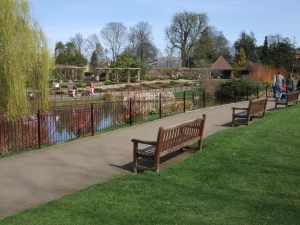
 London is an old city and one in which the traces of its history often remain to enjoy to this day. Regent’s canal is an example of this. Once a vital artery used for transporting such raw materials as iron, steel and grain, it has now become a place of pleasures for such activities as boat cruising, walking and cycling.
London is an old city and one in which the traces of its history often remain to enjoy to this day. Regent’s canal is an example of this. Once a vital artery used for transporting such raw materials as iron, steel and grain, it has now become a place of pleasures for such activities as boat cruising, walking and cycling.
